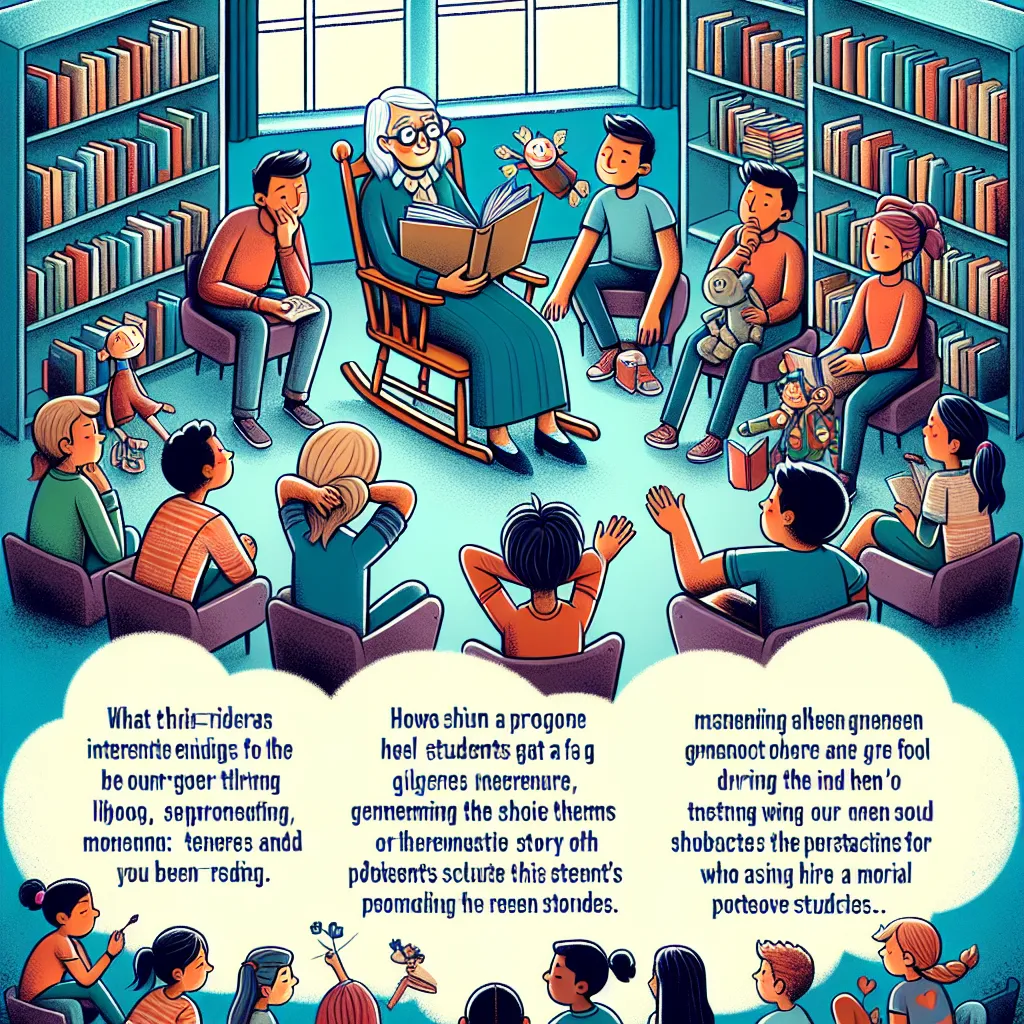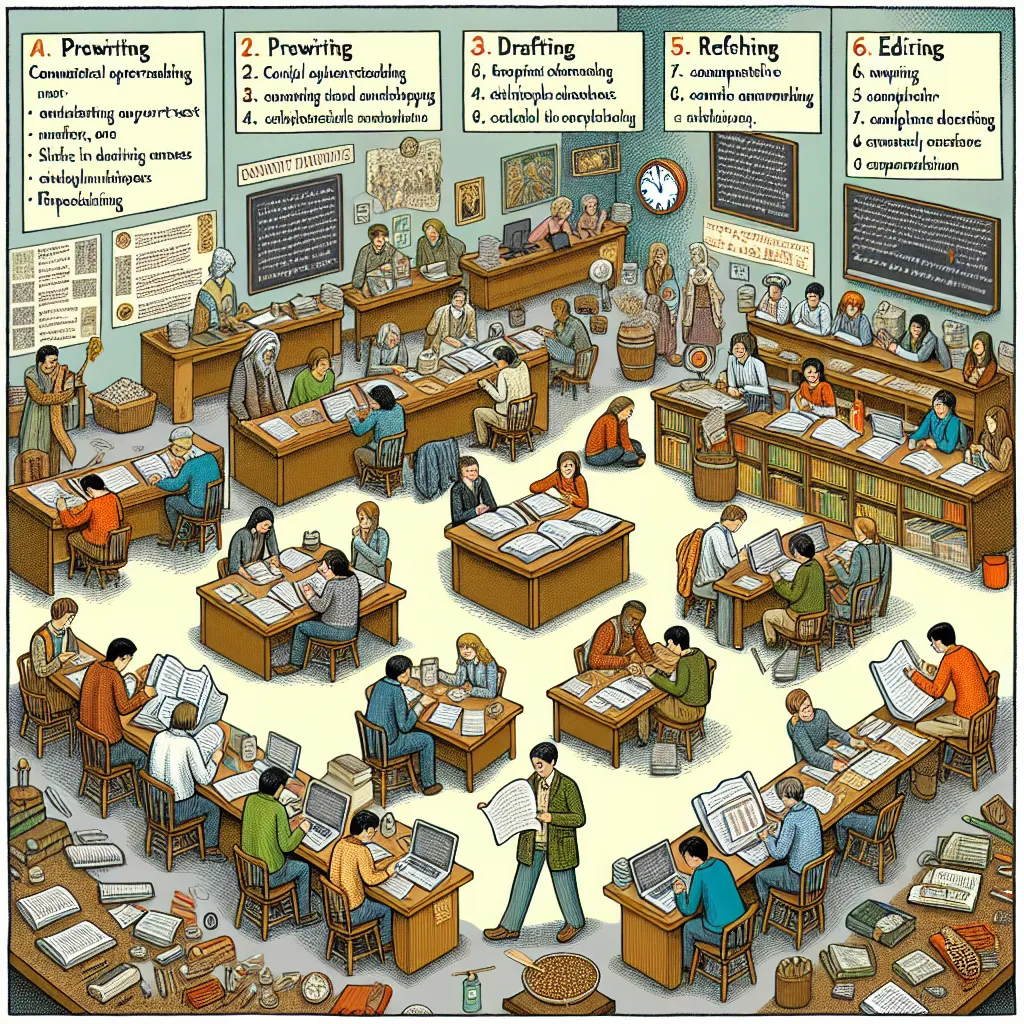Ask AI on The Internet
Question: 1.1Explain how you as the teacher would encourage the learners in your class to actively participate in sharing library activities to foster a positive reading culture. Please provide TWO (2) specific examples of interactive activities. 1.2In your own words, describe a memorable reading-time experience from your childhood. What strategies were used to make the reading session special and how did it impact your ongoing engagement with books until adulthood? 1.3Describe a scenario in which you would engage the learners' imagination to create alternative endings for a story during a whole class-shared reading lesson. How will this activity promote creativity and critical thinking in the learners? 1.4Share an example of your favourite book or story. Imagine that you are reading this story to a learner and encourage them to become the main character. Critically discuss how this personalised approach will enhance the learners' enthusiasm for storytelling and reading. 1.5Create a moral dilemma or moral of the story that you would introduce during a reading session with your learners in the classroom. How will you facilitate a thoughtful discussion around the dilemma or moral, and what lessons or values do you want the learners to take away from the experience regarding building a positive reading culture?
### 1.1 Encouraging Learners to Actively Participate in Library Activities #### Example 1: Book Club Discussions Organize a weekly book club where students are grouped based on their reading interests. Assign a book or let students choose from a curated list, giving them the opportunity to read it over the week. Set up a discussion session where every group shares their thoughts, favorite parts, and lessons learned from the book. This interaction can be facilitated by using guiding questions and encouraging students to relate the reading to their own experiences or current events. #### Example 2: Library Scavenger Hunt Create a library scavenger hunt where students have to find specific books, genres, or authors based on clues provided. As students locate the items, have them share a fun fact or a passage from the book with the class. This activity not only familiarizes students with the library but also encourages curiosity and discovery in reading. ### 1.2 Memorable Reading-time Experience I vividly remember my third-grade teacher reading "Charlotte's Web" aloud to the class. She used different voices for each character and paused at suspenseful moments to ask us what we thought would happen next. She also created a cozy reading corner with bean bags and soft lighting, making the experience intimate and magical. This approach made reading feel like an adventure, and it instilled a lifelong love for books in me. The suspenseful pauses and character voices kept me engaged and eager to read more stories. ### 1.3 Engaging Learners in Creating Alternative Endings Imagine reading "The Three Little Pigs" with the class and pausing just before the final showdown with the wolf. Ask the students to brainstorm alternative ways the story could end. Provide them with some prompts or question starters, like "What if the pigs decided to talk to the wolf?" or "What if the wolf became friends with the pigs?" This activity promotes creativity as students think outside the traditional narrative, and critical thinking as they evaluate the characters' motivations and the consequences of different actions. Sharing their ideas in a group setting also builds confidence and public speaking skills. ### 1.4 Personalized Approach to Enhance Enthusiasm Let’s take “Harry Potter and the Sorcerer's Stone” as an example. If I’m reading this book to the class, I could ask a student to imagine themselves as Harry Potter. I might say, “How would you feel if you received a letter from Hogwarts? What kind of spells and potions would you want to learn the most?” By inviting the student to become the main character, they can imagine themselves in various scenarios, enhancing their emotional connection to the story. This approach makes the narrative more relatable and engaging, as they can see themselves overcoming challenges and experiencing adventures, thereby fostering a deeper love for storytelling and reading. ### 1.5 Introducing a Moral Dilemma or Moral Consider the story "The Boy Who Cried Wolf." After reading the story, present the dilemma: “Was it fair for the villagers to ignore the boy when the wolf came the final time, even though he had lied before?” Facilitate a class discussion by asking open-ended questions such as: - “How would you feel if you were one of the villagers?” - “What would you have done if you were the boy?” - “Why is it important to be truthful?” Guide the discussion to emphasize the importance of honesty and trustworthiness. Encourage students to share their own experiences related to telling the truth or dealing with trust issues. Through this discussion, students will learn the value of integrity and the consequences of dishonesty, promoting a classroom culture that values ethical behavior and thoughtful reflection, which in turn supports a positive reading culture. By involving students in these interactive and reflective activities, you not only make reading more engaging but also help them develop critical thinking, creativity, and emotional intelligence.
Think your answer is better than the AI's? Post it below.
Other Most Relevant Posts:
Question Tags
If you want your question answered by an AI, click here.







Post your own comment: